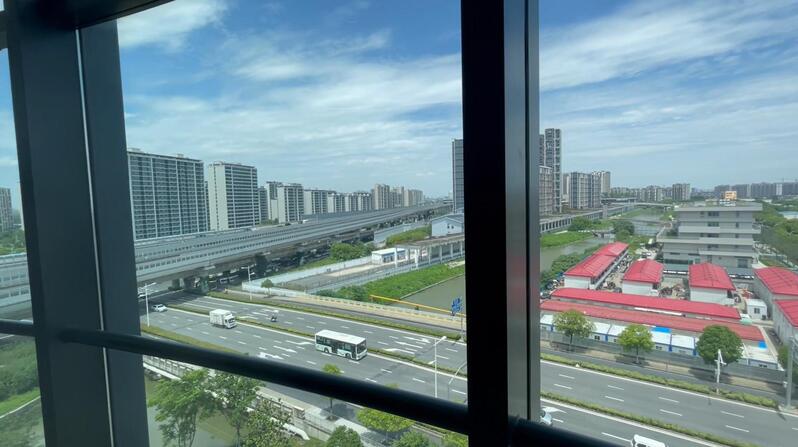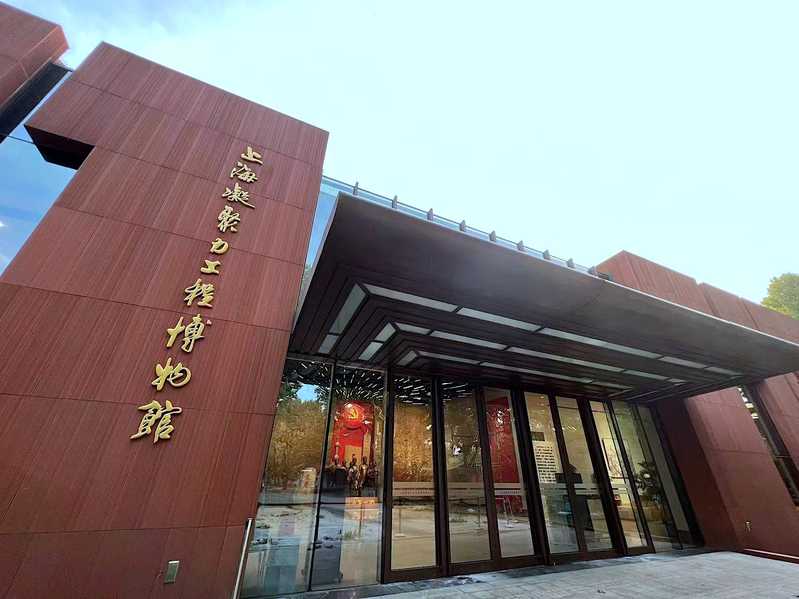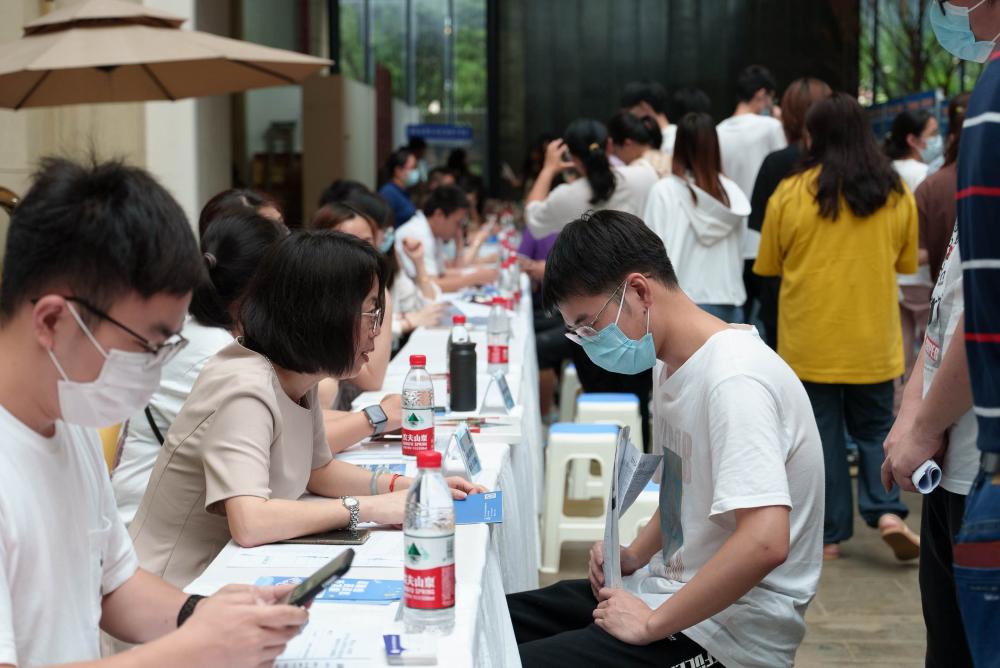Cooking in this way is delicious and beautiful. Shanghai Community Canteen Black Chicken | Hour | Canteen
Soy sauce meat as big as an adult's fist, cooked until soft, sticky, crispy and rotten, sold for 14 yuan per serving; Stewed black chicken and shiitake mushrooms for three hours, the aroma is fragrant, and it costs less than 20 yuan per large bowl; The shredded potatoes and Mapo tofu are priced at 3 yuan and 4 yuan respectively. The chef will suggest that two dishes be "double cooked", with a small amount, but the price is only 3 yuan based on the lowest price... The "Tongxin Hui" community canteen in Jing'an Temple Street, located on Xinzha Road, Jing'an District, has been open for more than a month. Thanks to its low price and good quality, it is favored by more and more surrounding residents and white-collar workers, and receives thousands of people to eat every day.
In the past two years, many community canteens have sprung up in the central urban area of Shanghai center. Some of the "delicious but inexpensive" community canteens have gained high popularity and reputation, which is unforgettable. Why can these canteens achieve good quality and affordable prices? Can these canteens stand out just by being "delicious but not expensive"? The reporter conducted an investigation recently.
Becoming an "opening point" in a well-known business district
Recently, at 10:30 noon, a 20 meter long queue had formed at the serving window of the "Tongxin Hui" community cafeteria in Jing'an Temple Street. Behind each transparent glass, there are plates of dishes with all colors, flavors, and flavors.
Here, an uncle prepares two dishes and takes out a packed lunch box. One box contains a braised crucian carp, and the other box contains four wide pieces of fried hairtail. Uncle said that he would take two dishes back to eat with his wife, and stir fry some green vegetables, which would be a great lunch. "I may not be able to have so much lunch, but I can still have dinner!" For two dishes, you can give a "15% discount" on the community elderly card on Jing'an Temple Street for only 30 yuan!
Over there, an aunt brought a tray with braised soy sauce meat, half shrimp skin and winter melon, half cabbage and gluten, and a bowl of rice. Braised soy sauce meat is a classic dish here, available almost every day, especially among the elderly. It only costs 14 yuan for a large piece. Shrimp skin winter melon costs 4 yuan per serving, cabbage and gluten cost 3 yuan per serving. Combining the two dishes together is called double pairing and only charges 3 yuan. "Recently, I haven't been cooking much at noon, so I just come to the cafeteria to eat. It's not a duplicate!"
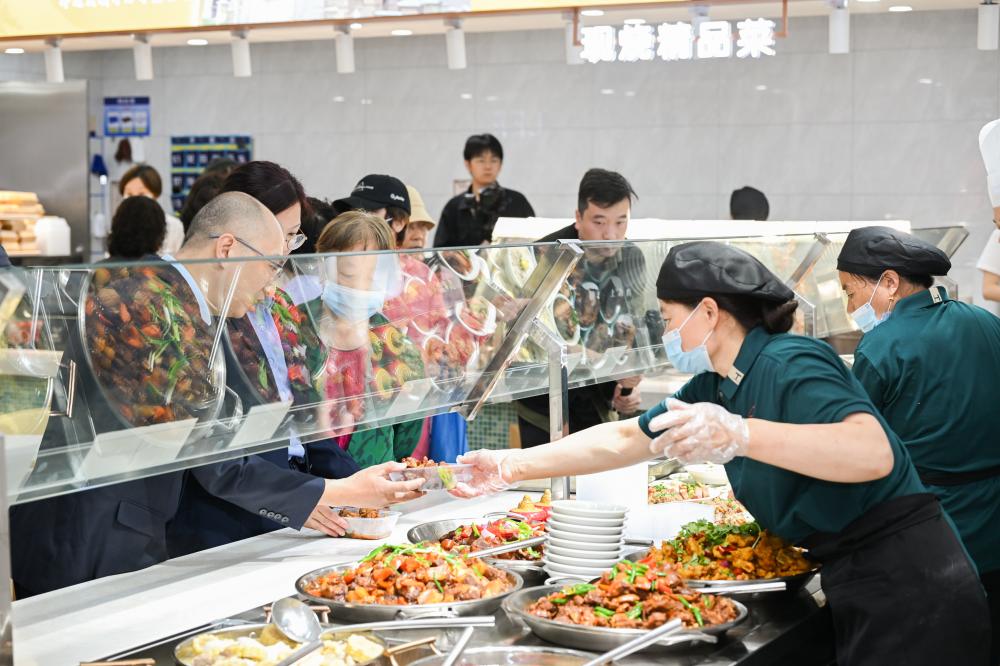
The "Tongxin Hui" community cafeteria offers a variety of dishes, serving in the morning, middle, and evening every day, with 60 dishes for lunch and dinner, and flipping flower heads every day. "We provide 18 classic dishes that are particularly popular among the elderly, such as soy sauce and meat, almost every day. However, other dishes need to be replaced the next day to ensure that the elderly don't get tired of them," said Li Jiajun, the person in charge of the operation of the "Tongxin Hui" community cafeteria in Jing'an Temple Street.
Not only are there many dishes, but the prices here are also very affordable. A vegetarian dish is usually priced at 3 to 4 yuan, a small meat dish is priced at 6 to 10 yuan, and a large meat dish is mostly priced at 12 to 15 yuan. "For over 20 yuan, one big meat dish, one small meat dish with vegetables and rice, a person can eat quite full and very well!" said Li Jiajun.
The cafeteria also encourages consumers to engage in "double pairing" and "triple pairing" of dishes. Vegetables and small meat dishes can be combined for consumption, and the price will be charged according to the lowest one, so that more dishes can be tasted.
The Jing'an Temple commercial district is a bustling food paradise in Shanghai, where community canteens can become popular. Not only does it rely on the cheap and high-quality dishes, but the cafeteria also has a "treasure of the town".
At the stewing window, a thick aroma drifted through the steaming pots. Stewed black chicken with mushrooms, stewed hooves and garlic, stewed pork ribs, and stewed three fresh dishes. The stewed dishes have a crispy and soft taste, with both soup and meat, making them very suitable for the taste of the elderly. But stewing usually takes two to three hours to make, and many people are unwilling to do it. The "treasure of the community cafeteria" is the four stewed dishes served daily. Stewed meat dishes cost 16 to 18 yuan per serving, while vegetarian dishes only cost a few yuan. Buy a stew and order a bowl of rice, and you'll be able to eat to your heart's content. Stewed vegetables are the earliest sold out dishes every day.
Serving the elderly, food safety is the most important. The "Tongxin Hui" community cafeteria grasps ingredients from the source, emphasizing quality and freshness. "All vegetables and various types of meat products are supplied from the source, and the entire process from the field to the dining table is traceable. Each dish must have an inspection report, for example, the main food is directly supplied from the small town rice of the self owned Northeast Wuchang production base, and the edible oil and various seasonings used are selected from the famous brands of listed companies."
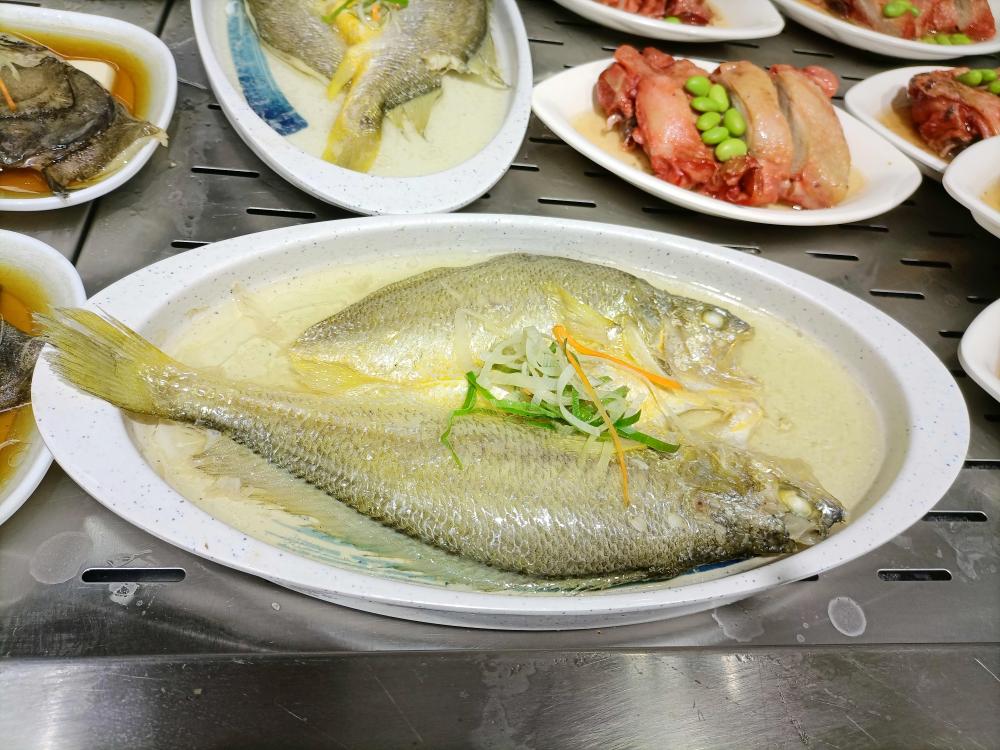
The cafeteria has recently launched the "You Order Me to Cook" service, adding a message area in the lobby and attaching the restaurant staff's WeChat to invite residents to leave messages. Residents with personalized needs can leave messages in advance. If conditions permit, the cafeteria will meet the needs of dish reservation and customized services.
Take out the "golden position" to layout the community cafeteria
In the past two years, there have been many community canteens with good reputation in the central city of Shanghai center. Why do they stand out?
"Firstly, the site selection of the community cafeteria," said many street officials.
The reporter found that many streets have taken out the most core golden location to layout community canteens in the past two years. Look at several popular community canteens newly opened in the central urban area of Shanghai center this year: the "Tongxin Hui" community canteen in Jing'an Temple Street is located at the intersection of Xinzha Road and Jiaozhou Road, the "Eye of the Su River" community canteen in Nanjing East Road Street, Huangpu District is located by the Suzhou River, and the Xuhong North Road community canteen in Xujiahui Street, Xuhui District is located near the street, which is the most convenient location in the street area.
"The site selection for opening a community cafeteria is actually the same as opening a restaurant: the city entrance must be good. Only when residents find it convenient will the community cafeteria have passenger flow," a community cafeteria operator told reporters. A few years ago, a street opened a community cafeteria in a residential area. This residential area itself is not very large and there are not many residents. Other larger residential areas in the surrounding area are some distance away from the community cafeteria, making it inconvenient for residents to walk by. Therefore, after the lively opening period, the popularity of this community cafeteria declined.

Some streets also use big data analysis to find suitable layout points for community canteens. In 2022, Xuhui District proposed the new concept of a one-stop community service "life box" for people's livelihood, which is to build a "Neighborhood Hui Party and Mass Service Center" in prominent locations along the street in residential areas, with the community cafeteria being a "standard configuration". Some streets and towns have conducted preliminary research and data analysis to understand the family structure and sensitive price range of elderly residents in the surrounding area, and combined with the layout of "life boxes" to determine the location of canteens. For example, the neighborhood restaurant "66 wutong Yard" and the "550 Lane · Neighborhood Huiwu Lixiang Canteen" located in Tianping Road Street provide 1600 meals per day. The street takes advantage of the characteristics of the "slow traffic block" in the Hengfu style area to select a location, allowing the cafeteria to be within a 15 minute walk of residents, thereby attracting a continuous stream of popularity.
Sitting in a "golden location" often means an increase in site costs. But many districts have found a solution and explored the "government+market" community cafeteria operation model, which prioritizes state-owned enterprises or government self owned housing, government funded decoration, and professional organization operation. The government and the operators agree on the operation period, preferential targets, and preferential intensity. In this way, it can not only alleviate the operational pressure of the cafeteria, but also improve the quality of food through market-oriented competition.
The venue of the "Tongxin Hui" community cafeteria in Jing'an Temple Street is a self owned property of the street. During the renovation of the cafeteria, the street provided certain assistance. Currently, elderly people holding elderly cards in the jurisdiction of the street are given a 15% discount when dining, and the discounted portion will be subsidized by the street to the operating party. The Xuhong Community Canteen located at No. 11 Xuhong North Road adopts a street and private enterprise cooperation operation model, providing residents with three meals a day. The Zhongleshan Community Canteen, also located in Xujiahui Street, is jointly operated by Shanghai New Xuhui Vegetable Basket, a state-owned enterprise of the district, and Xujiahui Street. In actual operation, Hengyue Catering, a Michelin Recommended Restaurant, is hired as the supervisor to ensure quality and taste.
More meticulous and considerate service for the elderly
The miniaturization of family structure, the reduction of children, and the aging of residents have led to an increasing number of elderly people in the community needing different gradients of meal assistance services. As a community cafeteria, the core issue to be addressed is the issue of elderly people's meals.
A journalist investigation found that the prices of dishes in popular community canteens are generally cheaper than those in Chinese fast food restaurants on the market, with the lowest being 10% cheaper and some reaching up to 20%.
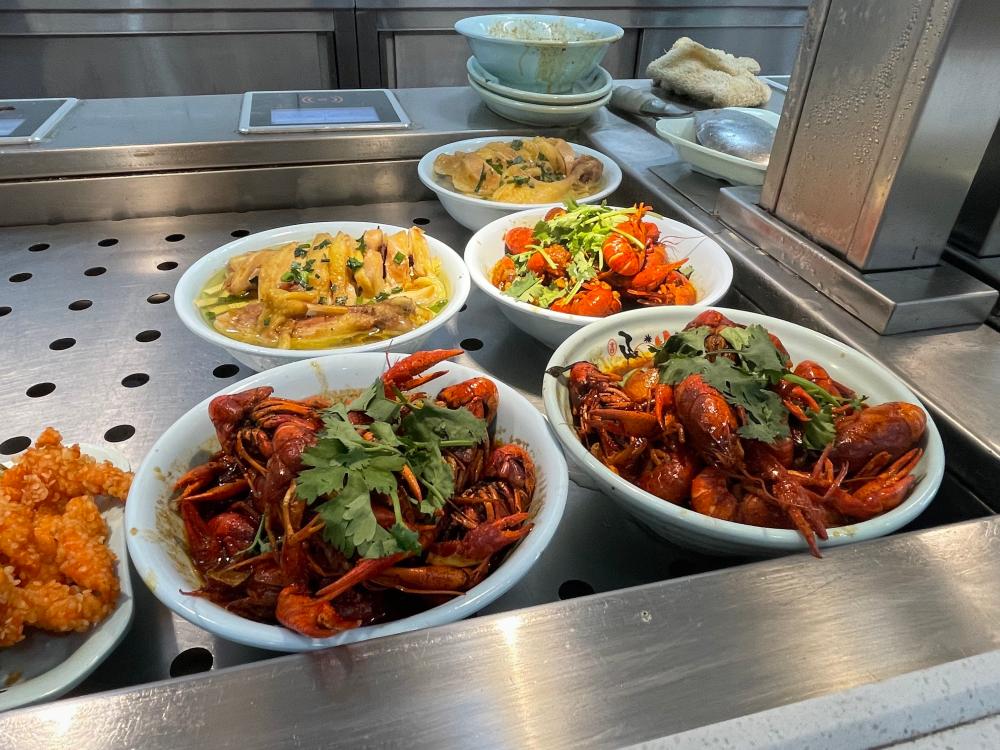
For example, in the Caohejing Community Elderly Canteen in Xuhui District, on the basis of the discounted prices of the cafeteria's dishes, elderly people over 60 years old in the jurisdiction can enjoy a 10% discount, and elderly people over 70 years old can enjoy an 85% government subsidy. "Elderly people can enjoy a set meal that includes one meat, one vegetable, and one small meat for less than 20 yuan here, and those with a small appetite can also pack it for dinner," said the cafeteria manager. At the "Shishang Bookstore" Elderly Canteen on Nandan Road, Xujiahui Street, Xuhui District, the street has set a price limit of up to 25 yuan for dishes: for example, a bowl of 16 small Wonton with a price of more than 15 yuan in the market is only 10 yuan here, and it is better for people over 70 years old to sell at nearly half of the market price after 85% discount.
The prices of the dishes are affordable, and the quality of the dishes cannot be careless, even requiring more attention to detail. Nowadays, a community cafeteria with a good reputation must have achieved a transformation from providing residents with affordable food to enjoying delicious and delicious food.
Sugar free windows, light windows and salty windows for diabetes patients can be found in community canteens. Some canteens also use on-site handcrafted steamed buns and deep-fried dough sticks to replace the cold chain transportation and on-site reheated meals in the central kitchen, providing residents with four King Kong breakfasts "with the taste of childhood alleys".
At the Caohejing community cafeteria, the rice that is cooked at 10:30 am every day is softer and more glutinous than the rice that is cooked at 12:00 pm, because the former is the usual lunch time for the elderly, while the latter is the peak for white-collar workers to visit. The most popular lion's head among residents is seasoned with horse hooves and rice to reduce greasiness and reduce the burden on the elderly. At the "Tongxin Hui" community cafeteria in Jing'an Temple Street, the exclusive dining time for the elderly is from 10:30 to 11:30 and from 16:30 to 17:30 every day. At this time, the dishes presented focus on "less salt, less sugar, and low-fat", with a relatively light taste and a softer and more sticky taste. After this period, the cafeteria is open to the public, and young white-collar workers come. The dishes have also changed, and some heavily flavored dishes, such as boiled fish and stir fried meat, are out of the pot.
"The essence of community canteens is to provide meals for the elderly, so we need to return to serving the elderly themselves." Many street officials said that an aging friendly environment is also the key to retaining elderly diners: the corners of tables and chairs should be made into a circular arc shape, the seat cushion should be soft and not collapse, the floor tiles should be made of anti slip materials, and there should be no obvious height difference at the entrance. For example, in the Caohejing community cafeteria, in addition to air conditioning, ceiling fans are also installed to meet the preferences of the elderly for natural wind.
Not just the cafeteria, but also the emotional connection point
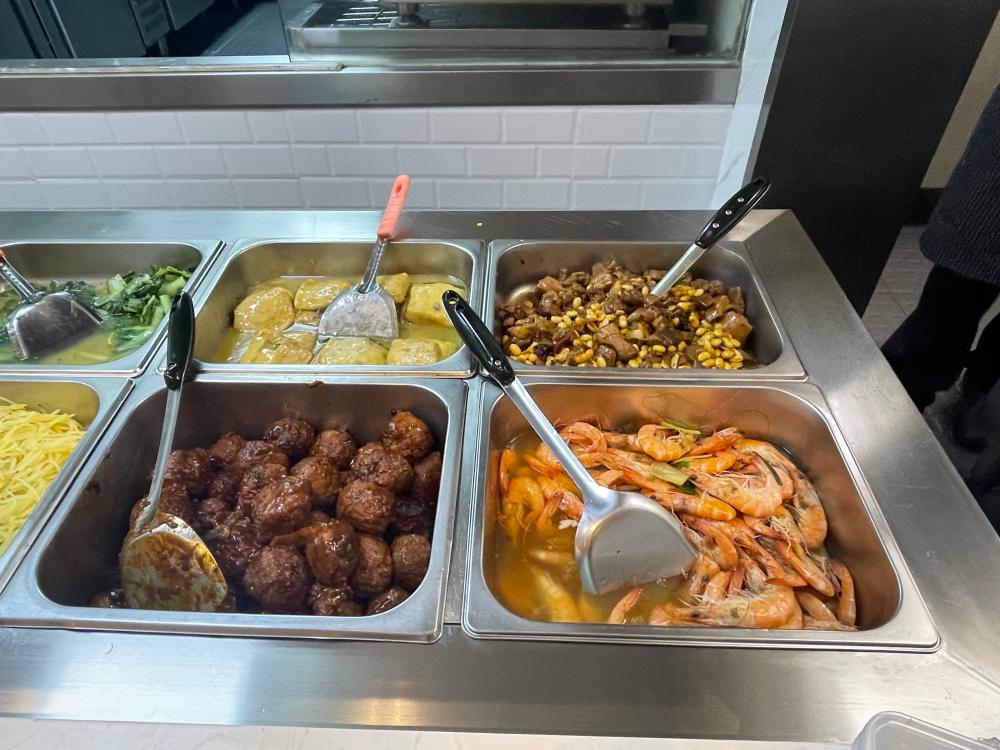
Recently, the weather in Shanghai has been hot. After 14:00 every day, several tables on the side of the "Tongxin Hui" community cafeteria in Jing'an Temple Street light up student eye protection lights. This is the student section opened by the cafeteria. Surrounding residents can bring their children here to incubate the air conditioning. The elderly like to chat together, while children can learn under eye protection lights. The cafeteria also provides free "cooling tea" for everyone to drink.
Many community canteens in Shanghai are not satisfied with just providing catering, but are striving to establish links with community residents and continuously extend other value-added services.
A journalist investigation found that in the past two years, many newly opened popular community canteens have been set up in party and mass service centers, integrated with basic functional facilities such as community health service stations, community cultural and sports facilities, and community bathing aids, providing residents with one-stop living services.
For example, in Xuhui District, community canteens are gradually integrating into the "living box" at the doorstep of residents, where residents can enjoy all-weather, one-stop services with just one exit. The Hongxin Community Canteen located in Longhua New Village is under the same roof as the Community Health Station and Party Mass Service Center. This community, which has undergone the transformation from "three old" to "three new", has added composite functions such as meal assistance, medical treatment, and social interaction. In addition to providing more than 60 kinds of dishes every day, the community canteen on Xuhong North Road has a community health service station that integrates traditional Chinese medicine services, cultural appreciation and health management. The community supermarket is downstairs, and the convenience services such as "3:30 class", parent-child baking, bath and hairdressing, and roof vegetable garden are provided upstairs, realizing the integration of functions such as "medical TESCO Group".
The "Tongxin Hui" community cafeteria in Jing'an Temple Street and the Nanjing East Road community cafeteria in Huangpu District are both located in the newly built Party and Mass Service Center. Many elderly residents often come to the Party and Mass Service Center, some come to the community health center to prescribe chronic disease medication, some come to participate in cultural activities, and some come to "repair and supplement" old objects, and "have a meal" by the way, which is very convenient. The community cafeteria has also increased the popularity of the Party and Mass Service Center. "These days, the weather in Shanghai has been hot, so I went out once. First, I went to the community cafeteria to have a meal, then strolled around the newly opened convenience market of the Party and Mass Service Center, and incubated the air conditioning. It took me half a day," an elderly person from Nanjing East Road Street told reporters.
Some humanized service measures have also become bonus points for community canteens with good reputation, establishing emotional connections between residents and canteens.
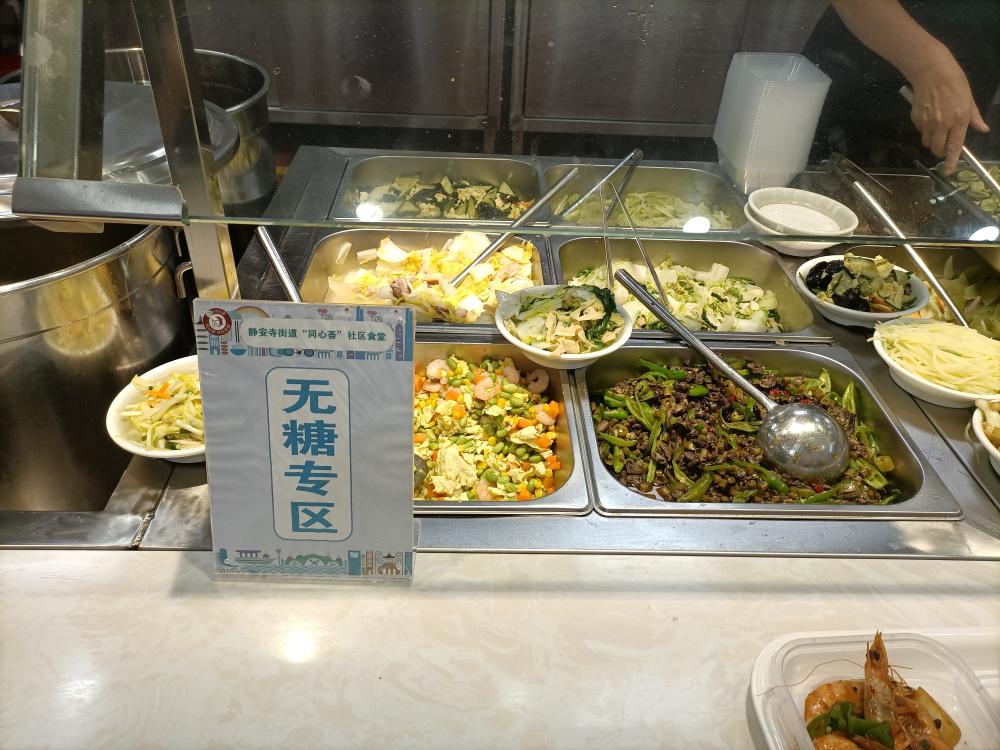
Many elderly people in Jing'an Temple Street will bring sea cucumbers from home to the "Tongxin Hui" community cafeteria and ask the master to help soak their hair. "This is our special service. Elderly people can bring over ingredients they don't know how to make, and we can help process them without charge," said Li Jiajun.
The managers, chefs, and cashiers of the "Tongxin Hui" community cafeteria have also added many elderly people's WeChat accounts to their phones. The cafeteria is too hot, and there is a queue at noon. Some elderly people don't like queuing, so they send a WeChat message to ask the store manager, chef, and cashier to help prepare their favorite dishes. The elderly person can go to the cafeteria, pull their elderly card, and pick up the dishes before leaving. For elderly people in special circumstances, community cafeteria operators also provide special care. Li Jiajun said that there is a WeChat account for Aunt Gao on his phone. Aunt Gao is 83 years old this year, and her children are still abroad. She likes to have dinner after 19:00; But some of the dishes in the cafeteria have been sold out for this meal. Aunt Gao had a special fondness for the steamed shrimp eggs sold in the cafeteria for a while. As soon as this dish is served, Li Jiajun will send a WeChat message to Aunt Gao, telling her to save a portion for her if she wants to come over to eat tonight. Aunt Gao almost goes to the cafeteria for dinner every day now.
Xuhui District is promoting the provision of dining convenience for elderly meal service points to students, white-collar workers, sanitation workers, coordinators, road police officers, and others. "The community cafeteria should be a place with a human touch and a lively atmosphere," said the relevant person in charge of Xuhui District.
